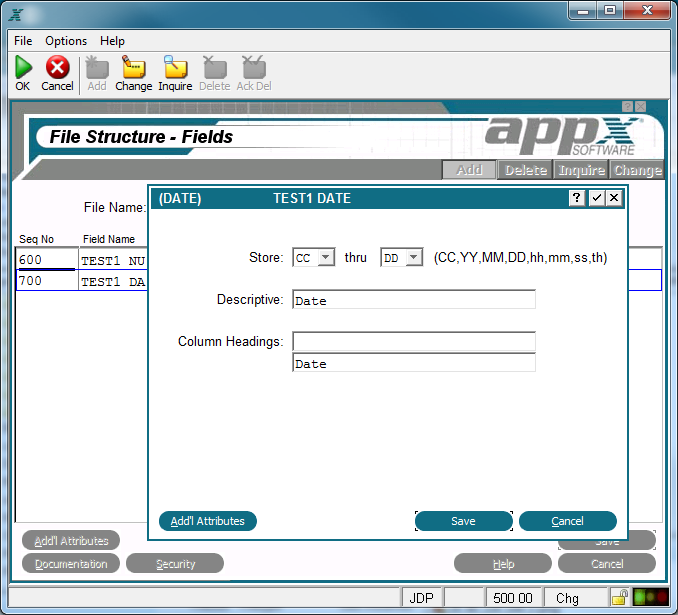Chapter 2-4: Files and Fields | ||||||||||||||||
Date Fields A date field contains date and/or time information. This information may, at your option, range from a century through a hundredth of a second. A field definition may also include separator characters (such as /, -, or :) and text, including the day of the week and the name of the month. Examples of date/time fields include invoice dates, order dates, elapsed time data, date/time stamps used to uniquely identify records, and audit trail fields such as date-added and date-changed. The Date fields overlay, shown below, permits you to add date/time-specific attributes to those already defined for the field. It automatically displays after you complete the entries in the Fields specifications screen if the Type you select is DATE.
Date Fields Overlay The Date fields overlay contains the following fields:
Store thru designates the parts of a date that are physically stored.Valid entries can be selected from a list by clicking the list
Descriptive provides a longer, more easily understood alternative to Field Name, one that is not required to be unique within an application. If blank at all default levels, Field Name is used. Column Hdgs designates up to two lines of column heading text. The APPX output process facility uses this text to generate standard column heading images for Start of Page and Start of Range class frames. For cosmetic reasons, the length of headings should not exceed the length of a field itself. Refer to Standard Column Heading Image for additional information. | ||||||||||||||||
Application Design Manual "Powered by Appx Software"1032 ©2006 By APPX Software, Inc. All Rights Reserved |

 button to the right of the field. Valid entries are:
button to the right of the field. Valid entries are: